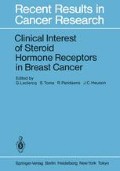Abstract
In 1977 a quality control program for steroid receptors, performed in breast cancer tissues, was initiated in The Netherlands. Presently 18 laboratories are participating in this program. During the first three trials lyophilized tissue powders were used as reference samples, because this type of preparation showed no loss of receptor binding when stored for at least 3 months at 4° C and for several weeks at room temperature [1]. Recently, the usefulness of lyophilized samples for daily control of steroid receptor assays within laboratories and for comparison and standardization of measurements between laboratories has been reviewed [6]. In the first trials of this quality control program large variations in receptor values between laboratories were observed, although the participants agreed on the classification of the reference samples as estradiol receptor (ER) positive [5]. The tissue powders used in those trials contained intermediate or high receptor values. These variations in reported results were ascribed to the variety of methodological techniques employed by the participants, including the use of several different protein assays [5]. These methodological factors caused laboratories to score rather consistently high or low on the various reference samples. In assessing these results, it was noted that variation in protein values could be minimized if all laboratories used the same type of protein assay in addition to the same protein standard. Therefore all participants agreed to measure the protein content of the cytosol by the method of Bradford [2], using Kabi human albumin as a protein standard. In addition it was decided to analyze lyophilized reference cytosols in the forthcoming trials in order to eliminate interlaboratory differences in the preparation of the cytosol and to permit easier delineation and standardization of the most important steps involved in the receptor binding assay itself.
The authors are indebted to Gail Janes for carefully correcting this manuscript
Access this chapter
Tax calculation will be finalised at checkout
Purchases are for personal use only
Preview
Unable to display preview. Download preview PDF.
References
Benraad T, Koenders A (1980) Estradiol receptor activity in lyophilized calf uterus and human breast tumor tissue. Cancer 46: 2762–2764
Bradford MM (1976) A rapid and sensitive method for the quantitation of microgram quantities of protein utilizing the principle of protein dye-binding. Anal Biochem 72: 248–254
Clark JH, Peck EJ (1977) Steroid hormone receptors: basic principles and measurement. In: O’Malley BW (ed) Receptors and hormone action. Academic, London, pp 383–410
King RJB (1980) Quality control of estradiol receptor analysis: The United Kingdom experience. Cancer 12: 2822–2824
Koenders A, Geurts-Moespot J, Hendriks T, Benraad T (1981) The Netherlands inter-laboratory quality control program of steroid receptor assays in breast cancer. In: Sarfaty GA, Nash AR, Keightley DD (eds) Estrogen receptor assays in breast cancer. Laboratory discrepancies and quality assurance. Masson 69–82
Koenders A, Benraad T (1981) Preparation of lyophilized reference samples for quality control of steroid receptor measurements. Ligand Rev 3 (4): 32–39
Raam S, Gelman R, Cohen JL (1981) Estrogen receptor assay: Interlaboratory and intralabo- ratory variations in the measurement of receptors using dextran-coated charcoal technique: A study sponsored by ECOG. Eur J Cancer 17: 643–649
Sarfaty GA, Nash AR, Keightley DD (eds) (1981) Estrogen receptor assays in breast cancer. Laboratory discrepancies and quality assurance. Masson, New York
Author information
Authors and Affiliations
Editor information
Editors and Affiliations
Rights and permissions
Copyright information
© 1984 Springer-Verlag Berlin · Heidelberg
About this chapter
Cite this chapter
Koenders, A., Benraad, T.J. (1984). Quality Control of Steroid Receptor Assays in the Netherlands. In: Leclercq, G., Toma, S., Paridaens, R., Heuson, J.C. (eds) Clinical Interest of Steroid Hormone Receptors in Breast Cancer. Recent Results in Cancer Research, vol 91. Springer, Berlin, Heidelberg. https://doi.org/10.1007/978-3-642-82188-2_15
Download citation
DOI: https://doi.org/10.1007/978-3-642-82188-2_15
Publisher Name: Springer, Berlin, Heidelberg
Print ISBN: 978-3-642-82190-5
Online ISBN: 978-3-642-82188-2
eBook Packages: Springer Book Archive

